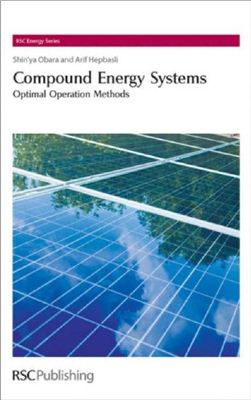Royal Society of Chemistry, Cambridge, UK, 2010, 268 pages
Green energy is essential to the development of a sustainable society but its output can be unstable. It is therefore necessary to develop a network where both conventional and green energy systems cooperate to generate a stable, compound supply. Compound Energy Systems: Optimal Operation Methods describes the construction and operation of compound energy systems using the latest optimization methods. The authors examine the combination of traditional and alteative energy systems, which is becoming an increasingly popular solution to green energy. Important factors such as cost, efficiency and dynamic characteristics are all considered. The green energy sources discussed include fuel cells, bioethanol reformers, geo-thermal heat pumps, solar cells and wind power. This book, a distillation of information only touched upon in other books, is aimed at undergraduate and postgraduate students, scientists, engineers and industrialists with an interest in the field.
Green energy is essential to the development of a sustainable society but its output can be unstable. It is therefore necessary to develop a network where both conventional and green energy systems cooperate to generate a stable, compound supply. Compound Energy Systems: Optimal Operation Methods describes the construction and operation of compound energy systems using the latest optimization methods. The authors examine the combination of traditional and alteative energy systems, which is becoming an increasingly popular solution to green energy. Important factors such as cost, efficiency and dynamic characteristics are all considered. The green energy sources discussed include fuel cells, bioethanol reformers, geo-thermal heat pumps, solar cells and wind power. This book, a distillation of information only touched upon in other books, is aimed at undergraduate and postgraduate students, scientists, engineers and industrialists with an interest in the field.

